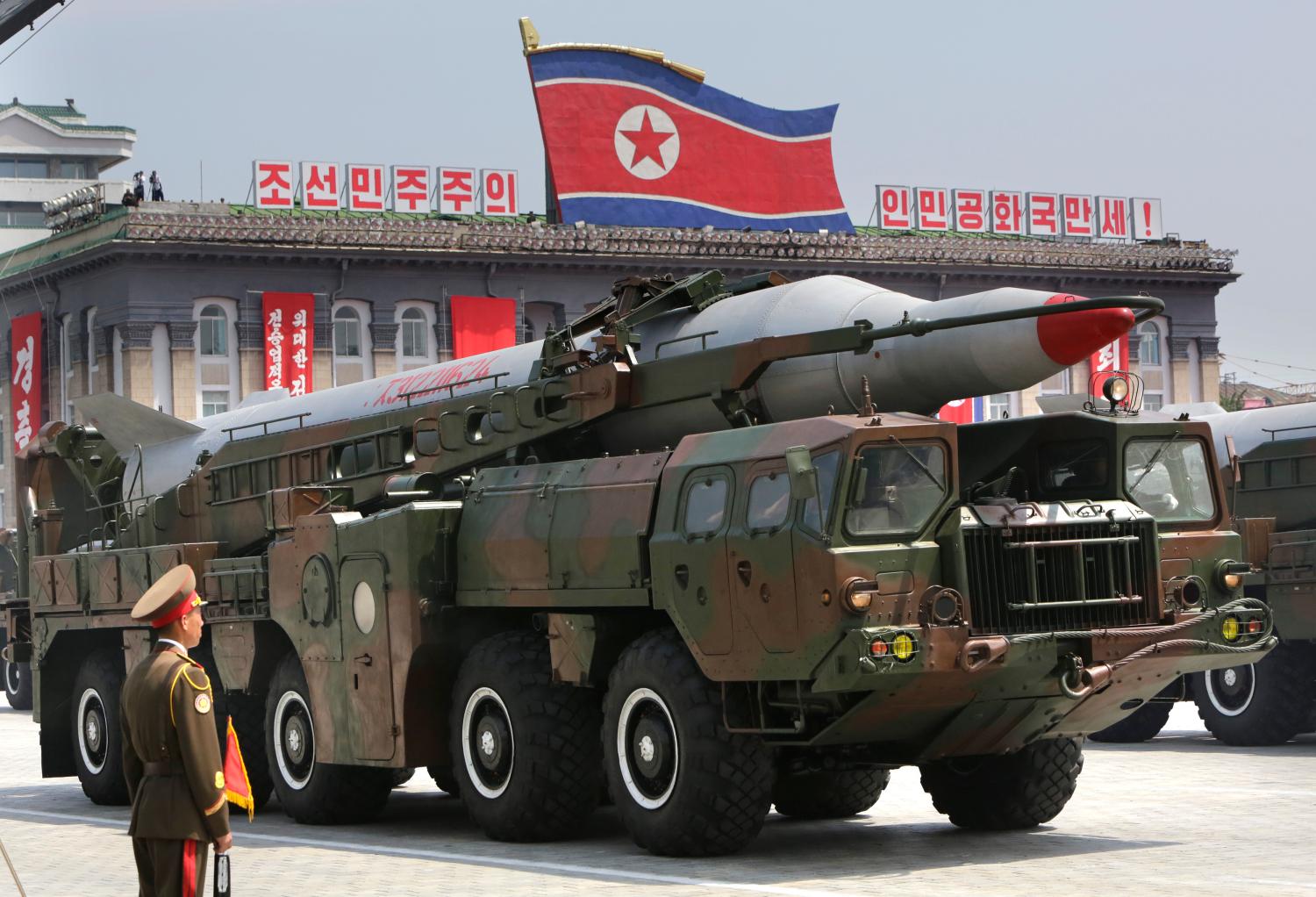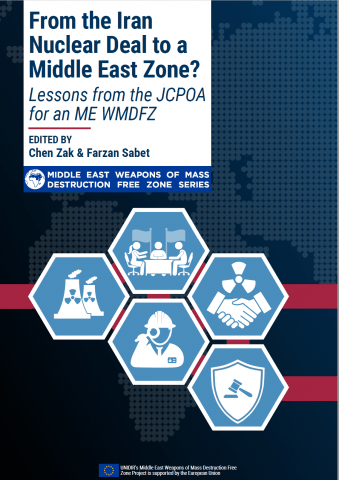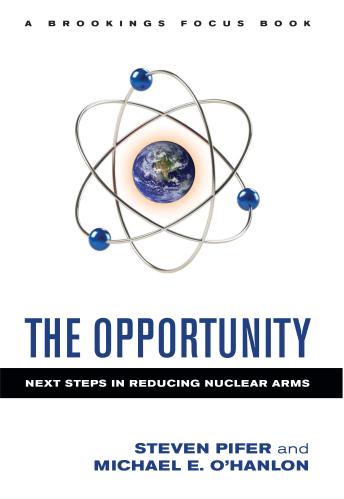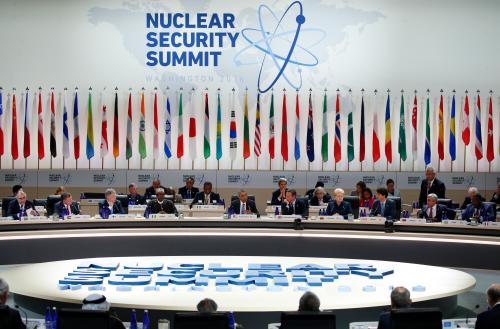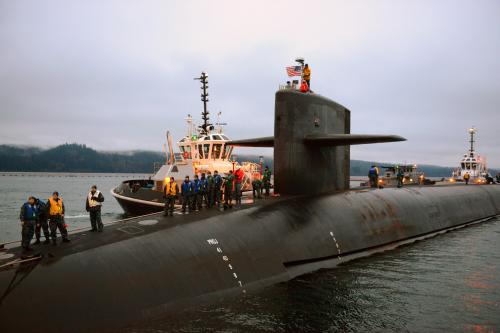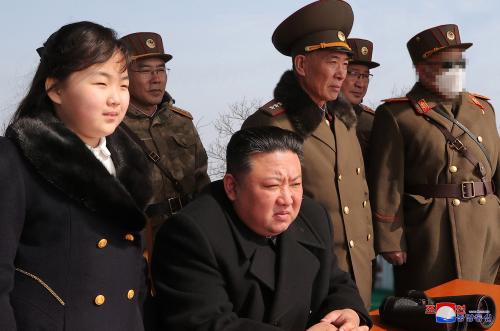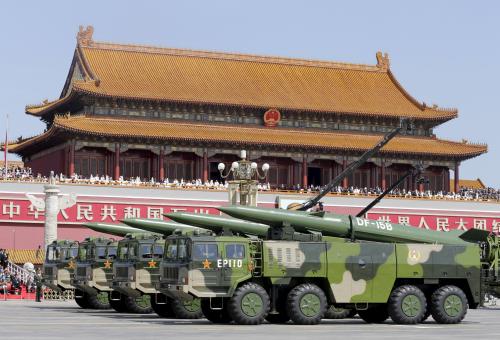The global nuclear non-proliferation regime, as it has evolved since the entry into force of the Nuclear Non-Proliferation Treaty (NPT) in 1970, has been remarkably resilient. Despite predictions of a “cascade of proliferation,” there are currently only nine states with nuclear weapons, and that number has remained the same for the past 25 years.1 The NPT is nearly universal, with 190 parties and only five non-parties (India, Israel, North Korea, Pakistan, South Sudan). Several countries voluntarily abandoned nuclear weapons development programs (Argentina, Brazil, Egypt); several others were forced diplomatically or militarily to give up the quest (Iraq, Libya, South Korea, Syria); three former Soviet republics inherited nuclear weapons but gave them up (Belarus, Kazakhstan, Ukraine); and one country built a small arsenal before unilaterally eliminating it (South Africa). With Iran’s path to nuclear weapons blocked by the Joint Comprehensive Plan of Action (JCPOA) for at least 10 to 15 years, there are no non-nuclear weapon states currently believed to be pursuing nuclear weapons, according to U.S. government sources. And despite cases of nuclear smuggling and continuing interest of terrorist groups in acquiring nuclear weapons, no thefts of enough fissile material to build a bomb are believed to have taken place.

Success to date, but warning signs for the future
The success of the non-proliferation regime to date could understandably give rise to speculation that we have seen the end of nuclear proliferation–that the number of nuclear-armed states will remain capped at single digits. But recent international developments suggest that such an optimistic assessment may be premature and that continued success cannot be taken for granted.
- In today’s unstable and uncertain security environment–with Russia, China, North Korea, and Iran challenging the status quo–governments are more likely to reevaluate their fundamental security choices.
- North Korea’s accelerated nuclear and missile programs threaten Northeast Asia and eventually the U.S. homeland and could prompt South Korea and Japan to reconsider their nuclear options.
- While the JCPOA has worked well so far, key restrictions will expire after 10 or 15 years. In any event, the agreement’s future is in question, perhaps motivating Saudi Arabia and others to hedge their nuclear bets.
- The willingness of U.S. allies and security partners to forgo nuclear weapons has depended heavily on their confidence in American security assurances, but there is a growing perception that the United States may reduce its overseas military presence and scale back its security commitments.
- The cooperation of Russia and China is often essential to achieving key non-proliferation goals, but the downturn of U.S. bilateral relations with Moscow and Beijing could prevent such cooperation.
- The safeguards system of the International Atomic Energy Agency (IAEA) is indispensable to verifying non-proliferation obligations, but increasing demands, budgetary shortfalls, and growing politicization among IAEA members could undermine its effectiveness.
- National and multilateral export controls have impeded access to proliferation-sensitive materials, equipment, and technologies, but illicit procurement networks have become more sophisticated and adept at circumventing those controls.
- None of the countries now embarking on civil nuclear power programs say they are planning to acquire enrichment or reprocessing capabilities, but many of them are unwilling to forswear what they consider to be their “right” eventually to have such dual-use capabilities.
- Great progress has been made in reducing, consolidating, and securing potentially vulnerable weapons-usable nuclear materials worldwide, but much remains to be done. U.S.-Russian cooperation has ended and the momentum generated by the 2010-2016 Nuclear Security Summit process may not be sustained.
- Since the optimism of President Obama’s 2009 Prague speech and the signing of the 2010 New START Treaty, nuclear arms control efforts have stalled–with the deterioration of U.S.-Russian relations, Moscow’s apparently increased reliance on nuclear weapons, mutual accusations of Intermediate-Range Nuclear Forces Treaty (INF) violations, and concerns about a new arms race.
- Polarization within the NPT membership has reached new heights, with many non-nuclear weapon states–frustrated by the pace of nuclear disarmament–supporting a treaty to ban nuclear weapons, which opponents of the ban believe will weaken the NPT and delegitimize the nuclear deterrence that allows U.S. non-nuclear allies to forgo nuclear weapons.
Challenges for the Trump administration
The Trump administration inherits a global nuclear non-proliferation regime that has been more effective and durable than many observers expected, but the regime may now be coming under stress. To ensure that it will continue to serve the security of the United States and its partners, the Trump administration will need to address the following non-proliferation challenges.2
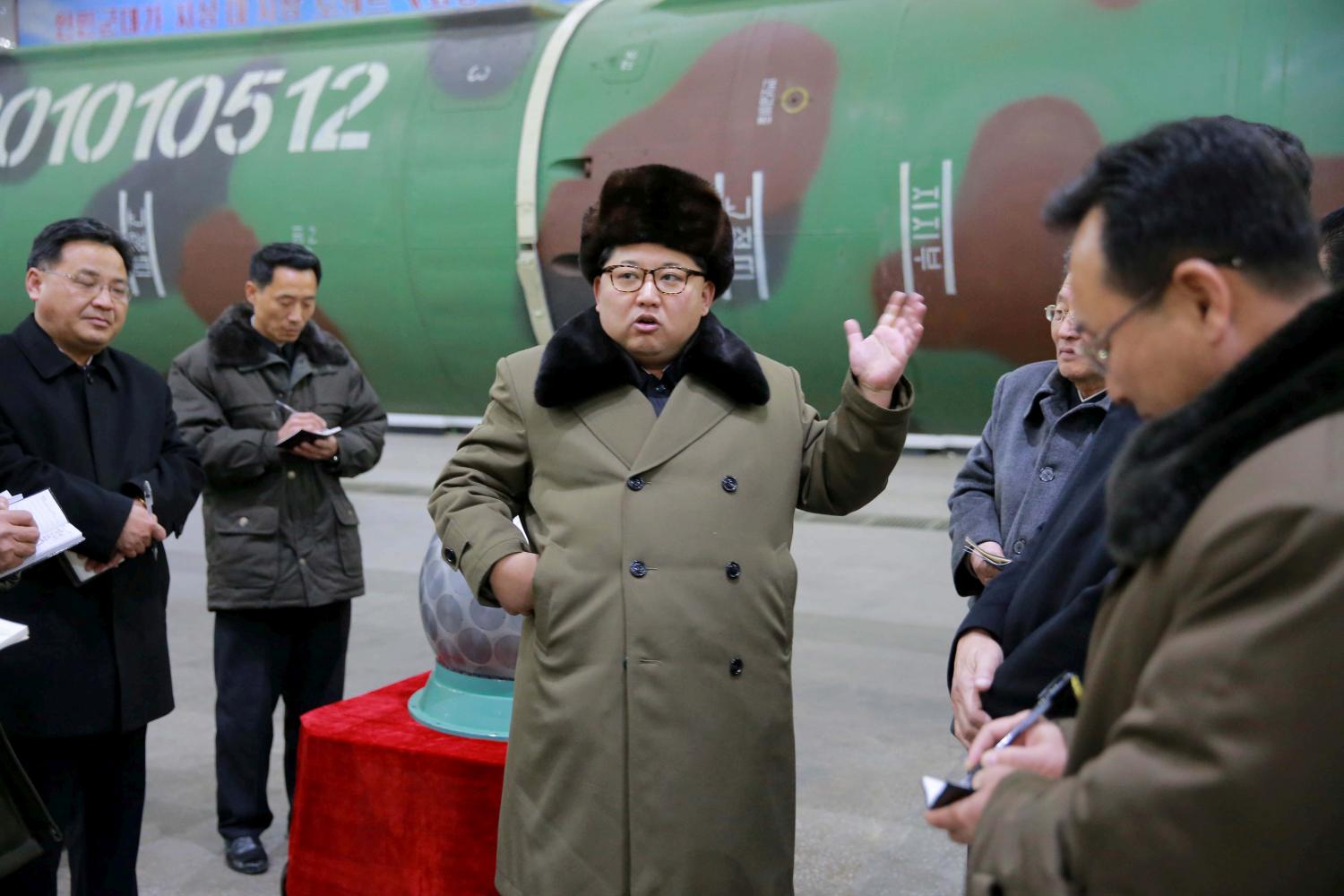
1. Dealing with North Korea’s nuclear and missile capabilities
The Trump administration basically has two options for addressing the North Korean threat. The first would seek to sharply increase pressure on Pyongyang by ratcheting up sanctions, curtailing its hard currency earnings, and impeding its imports of sensitive technologies. China would be pressed hard to join in this campaign, including by threatening to sanction Chinese entities that facilitate North Korea’s illicit efforts. The United States would work with South Korea and Japan to strengthen alliance defense capabilities and reinforce the U.S. extended nuclear deterrent. Ideally, this option would get North Korea to unilaterally curb or give up its nuclear and missile programs. More realistically, it would be the basis for a potentially long-term containment strategy that would aim to deter Democratic People’s Republic of Korea (DPRK) aggression, reassure U.S. allies, and ultimately result in the elimination of North Korea’s threatening capabilities when the regime finally collapses or is fundamentally transformed.
The second option involves a dual-track strategy of pressure and negotiations. Beijing’s support for any approach to North Korea is essential and, while China would oppose a “pressure only” strategy, it is more likely to join in pressuring Pyongyang in order to provide leverage for a negotiated solution, as it did in the case of Iran. South Korea’s support is also essential, and whether its next president is a conservative or progressive, the Republic of Korea (ROK) public will insist on negotiations. The immediate goal of negotiations would be an interim freeze on DPRK nuclear and missile capabilities, with a commitment eventually to achieve complete denuclearization. Like the first option, this one would also involve building up alliance defenses and deterrence as well as bringing much greater pressure to bear on Pyongyang.
The dual-track approach provides no assurance of success. But compared to a “pressure only” strategy, it stands a better chance of gaining the crucial support of Beijing and Seoul, putting effective pressure on the DPRK, and arresting the growth of the DPRK’s nuclear and missile programs.

2. Blocking Iran’s path to nuclear weapons
The United States has an interest both in preventing Iran from acquiring nuclear weapons and in thwarting Iranian designs to expand its influence in the Middle East at the expense of U.S. regional partners. With Iran complying with its nuclear commitments under the JCPOA and none of the JCPOA parties willing to renegotiate the nuclear deal, the best course of action for the Trump administration is to preserve the JCPOA and promote its strict enforcement, while at the same time actively pushing back against provocative Iranian behavior not covered by the deal and seeking to prevent Iran from acquiring nuclear weapons after key JCPOA nuclear restrictions are scheduled to expire. Such an approach would include the following elements:
- The United States should firmly resist any Iranian efforts to weaken or evade its nuclear commitments and should seek to maintain international support for re-imposing previously suspended sanctions in the event of Iranian non-compliance. At the same time, if Washington wants Tehran to continue fulfilling its nuclear commitments, it is important that the Iranians receive the sanctions relief to which they are entitled.
- In close coordination with its regional partners, the United States should take a more assertive approach to countering destabilizing Iranian behavior. That would include maintaining a formidable U.S. military presence in the region; reacting firmly to any Iranian attempts to challenge U.S. military assets; bolstering the defense capabilities of Gulf partners through arms transfers, training, and joint exercises; addressing the Iranian missile threat by impeding missile-related procurement, imposing missile-related sanctions, and promoting integrated regional missile defenses; inhibiting Iran’s illicit arms supplies to its regional proxies; and exposing Iranian human rights abuses (including the unjustified incarceration of dual nationals).
- The United States should enforce existing non-nuclear sanctions against Iran (which are not precluded by the JCPOA) and, when warranted, impose new sanctions for non-nuclear reasons (e.g., support for terrorist organizations and other proxies, ballistic missile activities, human rights abuses). Washington should ensure that any new sanctions are well justified and carefully targeted on Iran’s non-nuclear behavior in order to avoid the impression that the United States is seeking to restore pre-JCPOA sanctions under a non-nuclear label and reverse the gains of sanctions relief–an impression that could result in opposition from America’s P5+1 partners and Tehran scaling back the implementation of its nuclear commitments. While working with Congress on any new sanctions legislation, the Trump administration should resist measures that would contravene the JCPOA (e.g., rescinding the license for a Boeing aircraft sale) or that are intended to provoke the Iranians to withdraw from it.
- The United States, hopefully with Russian support, should seek to persuade Iran to forgo the acquisition of an industrial-scale enrichment capacity when key JCPOA restrictions expire, or, at a minimum, to defer the dates at which those restrictions expire. In exchange, Washington could offer inducements, such as terminating primary U.S. sanctions that prevent U.S. entities and individuals from doing business with Iran.
- Regardless of whether the expiration dates are eventually modified, the United States should seek to deter Iran from breaking out of its obligations and producing nuclear weapons, whether before or after 15 years. It should declare that it is U.S. policy to prevent Iran from acquiring nuclear weapons and that the United States is prepared to use military force, if necessary, to stop Iran from breaking out and producing nuclear weapons.
With Iran’s path to nuclear weapons currently blocked, there are no non-nuclear weapon states currently believed to be pursuing nuclear weapons. The Trump administration should seek to keep it that way.
3. Reducing incentives for other states to go nuclear
With Iran’s path to nuclear weapons currently blocked, there are no non-nuclear weapon states currently believed to be pursuing nuclear weapons. The Trump administration should seek to keep it that way.
South Korea
Alarm over the nuclear and missile programs of North Korea and the belligerence of its leader have triggered support among some South Korean politicians, media figures, and pundits for an ROK nuclear weapons capability. ROK government leaders are firmly opposed to having nuclear arms, and supporters of the nuclear option remain a small majority. But while South Korean leaders continue to have faith in the U.S.-ROK alliance, they believe the U.S. extended nuclear deterrent can be strengthened, including by giving South Korea a more a more prominent role in the planning of the deterrent and by permanently stationing U.S. “strategic assets” (such as nuclear-capable aircraft and perhaps even U.S. nuclear weapons) in South Korea.
While U.S. officials have resisted greater ROK participation in nuclear decision-making and re-deployment of U.S. nuclear weapons to the peninsula, they have made a major effort to allay any concerns about the U.S. commitment to ROK security. They have demonstrated U.S. support with major joint military exercises, plans to deploy the Terminal High-Altitude Area Defense (THAAD) missile defense system, visits and fly-bys of U.S. strategic assets (including nuclear-capable bombers deployed to Guam), and regular, high-level reaffirmations of commitment, most recently during Secretary of Defense Jim Mattis’ February 2017 visit.
South Koreans appreciate these measures of reassurance, but they are looking for additional ways to reinforce extended deterrence. To keep the ROK’s interest in its own nuclear capability low, the Trump administration should consider how it can be more responsive to South Korea’s desire to play a more significant role in extended deterrence, whether in terms of sharing more information about U.S. plans, giving the ROK more responsibility in the planning process, or deploying certain U.S. strategic assets in South Korea more persistently, or even permanently.
Japan
Largely as a result of the nuclear bombs dropped on Hiroshima and Nagasaki in 1945, the vast majority of Japanese oppose the acquisition of nuclear weapons (in contrast with majority support for nuclear arms in South Korea). In addition, Prime Minister Shinzo Abe and other Japanese leaders voice their strong opposition to the possession of nuclear weapons. Still, Japan has long pursued a hedging strategy by developing and operating enrichment and reprocessing facilities that serve genuine civil nuclear energy objectives while at the same time providing an option to build nuclear weapons relatively quickly.
The Japanese face increasing threats. Like the South Koreans, they are concerned by the growing North Korean threat. But the Japanese regard China as posing the more profound, long-term challenge, and they see China’s increasingly assertive posture, including its ambitious conventional and nuclear modernization programs, as evidence of Beijing’s intention to challenge U.S. military superiority and dominate the region.
Japan has responded to the North Korean and Chinese threats by boosting its own conventional defense capabilities as well as by relying heavily on the U.S.-Japan alliance. Like South Korean leaders, Japanese leaders continue to have faith in the alliance. But also like the South Koreans, they seek reassurance that they can count on the U.S. extended deterrent. The United States has gone to great lengths to reassure its ally, including by providing frequent, high-level affirmations of support, including the public assurance, recently repeated by Secretary Mattis, that the Japanese-claimed Senkaku Islands are covered by the U.S.-Japan security treaty.
Still, the Japanese, like the South Koreans, can never by reassured enough. We can expect that in bilateral discussions about extended deterrence, Tokyo will seek many of the same things that Seoul is pressing for. While the likelihood of Japan eventually opting for nuclear weapons is low (and significantly lower than that of the ROK), it still behooves the Trump administration to give priority in its bilateral relations with Tokyo to addressing its ally’s anxieties and ensuring that it remains confident of U.S. security guarantees.
Saudi Arabia
While the Kingdom of Saudi Arabia seems comfortable with the JCPOA for the time being, it is convinced that Iran will pursue nuclear weapons when restrictions on enrichment expire. Their concerns about Iran, moreover, are not confined to the nuclear issue. They believe Tehran is using proxies and acting directly to destabilize the region and achieve hegemony. While Riyadh’s concerns about Iran’s behavior have grown, its confidence in the United States as a provider of security has declined. It believes the Obama administration did not do enough to support its traditional regional friends and was prepared to accept a central role for Iran in regional affairs at the expense of the Gulf Arabs.
Given its concerns about U.S. reliability, the Saudis have begun to act more assertively and independently, especially in prosecuting their military campaign in Yemen. However, Saudi officials point out that, given the close U.S.-Saudi defense links that have long been the foundation of Saudi security, the kingdom has little choice but to continue relying on the United States.
Notwithstanding their dependence on the United States, Saudi leaders have informally expressed the view that, if the Iranians acquires nuclear weapons, Saudi Arabia will have no choice but to follow suit. In seeking to match Iran, what the Saudis would lack is not motivation or financial resources but nuclear infrastructure and expertise. The Saudis have ambitious civil nuclear energy plans, but they are starting from scratch and their plans will take decades to materialize.
Given the infeasibility for the foreseeable future of the kingdom acquiring an indigenous capability to produce fissile material, speculation has turned to the possibility of Saudi Arabia acquiring the necessary materials or even nuclear weapons from Pakistan, which reportedly received financial support from Saudi Arabia for its nuclear weapons program. While rumors persist that Islamabad agreed to help Riyadh acquire nuclear weapons, senior Saudis and Pakistanis deny such an understanding exists. If it ever did exist, it was probably a vague, unwritten understanding reached long ago at the highest level, and it is unlikely that Islamabad would be willing to follow through on it today.
So the probability of Saudi Arabia acquiring nuclear weapons must be considered low. Keeping it low should be a significant element of the Trump administration’s approach to the kingdom. The administration should consult regularly with Riyadh on Iran’s implementation of the JCPOA, conclude a bilateral civil nuclear agreement even if it does not involve a legally binding renunciation by Saudi Arabia of fuel cycle capabilities, and most importantly demonstrate to the Saudis and other Gulf partners that the United States will counter nefarious Iranian influences and remain committed to their security.
Other countries worth watching
There are a handful of countries that, for a variety of reasons–including past interest in nuclear weapons, a challenging external security environment, the availability of indigenous technical expertise, or a shift toward less transparent and more autocratic domestic governance–might be tempted to reconsider their nuclear options. Among them are Egypt, Turkey, Syria, Ukraine, and Myanmar. Currently, none of them is likely to pursue nuclear weapons, but it would be prudent to put them and perhaps others on a watch list.
4. Discouraging the spread of enrichment and reprocessing capabilities
Discouraging the spread of enrichment and reprocessing capabilities has been a key element of U.S. non-proliferation policy since the Ford administration in the mid-1970s. Fortunately, interest by additional states in building fuel cycle facilities has declined in recent years, both because the economic justification is very weak and because a recognition of the proliferation risks associated with enrichment and reprocessing has led to tighter restrictions on the transfer of fuel cycle equipment and technology.
So, at least at present, the spread of enrichment and reprocessing capabilities does not appear to be a pressing problem. But if China builds a large commercial reprocessing facility or if Japan restarts its Rokkasho reprocessing plant, reprocessing could be given a new lease on life. And some countries now embarking on nuclear power programs may decide to acquire enrichment or reprocessing capabilities regardless of the unfavorable economics. Therefore, despite the current lull in demand for fuel cycle programs, preventing their spread should remain a feature of U.S. non-proliferation policy, and could include the following elements.
- Encourage Beijing to hold off on buying a large reprocessing plant and urge Japan to postpone the restart of the Rokkasho facility, at least until enough reactors are online to utilize the plutonium and thereby avoid the further accumulation of plutonium in Japan.
- In new U.S. civil nuclear cooperation agreements with non-nuclear weapon states, seek a legally binding commitment by the U.S. partner not to engage in enrichment or reprocessing. But if that is not achievable, Washington should be prepared, if it sees a net non-proliferation gain, to find alternative ways of discouraging fuel cycle programs. Such measures could include not banning fuel cycle programs but instead giving the United States the right to terminate cooperation if its partner later decides to pursue them, or requiring a legally binding renunciation in a shorter-than-usual agreement (10-20 years).
- Reduce incentives for reprocessing by exploring various approaches to the “back end” of the fuel cycle, including greater reliance on interim dry cask storage; spent fuel take-back and “cradle-to-grave” fuel supply arrangements; collaborative research on deep borehole disposal of spent fuel; cooperative research and development of advanced nuclear reactors and fuel cycles that do not involve reprocessing; and exploration of repositories for the final disposal of spent fuel, drawing on promising developments in Finland and South Australia.
- Explore regional approaches, such as a fuel-cycle-free zone in Southeast Asia or a reprocessing-free zone in the Gulf region, or multinational approaches, such as an arrangement in which a state invests in a multinational enrichment facility managed and operated by existing holders of enrichment technology and, in exchange, receives guaranteed fuel supplies but no access to enrichment technology.
5. Strengthening the non-proliferation toolkit
Another key challenge is ensuring that measures and mechanisms that strengthen the non-proliferation regime as a whole–including export controls, interdiction arrangements, IAEA safeguards, and capacity-building assistance–are effective and able to cope with the changing proliferation threat.
Export controls
While national and multilateral export controls have played a major role in impeding transfers of proliferation-sensitive items, the performance of many national control systems remains uneven, with shortfalls both in technical capacity and political will.
A key focus of U.S. attention should be China, which is the number one target of illicit procurement networks. Beijing has set up an extensive export control system but does not devote sufficient resources to it, and enforcement can be weak. To get China to implement its controls more conscientiously, the United States will have to elevate this issue to the highest levels. Export controls should also be on the bilateral agenda when senior U.S. officials meet with their counterparts in Russia and in the transit and transshipment countries of Southeast Asia and the Middle East.
The 48-nation Nuclear Suppliers Group’s (NSG) recent preoccupation with whether to admit non-NPT states–mainly India but also Pakistan–has detracted from the NSG’s normal export control responsibilities. The United States, which has pressed for India’s immediate membership, should seek an early solution in which all non-NPT states would be eligible if they meet certain criteria, such as effective export controls and physical security measures. Under this approach, India would be admitted soon and Pakistan later, when it is able to demonstrate its commitment to those criteria.
With the membership issue out of the way, the United States should seek to strengthen NSG guidelines, including by making a recipient state’s adherence to the IAEA Additional Protocol a condition of nuclear supply and by requiring recipients to gain suppliers’ consent to enrich or reprocess any materials supplied. The NSG’s Technical Working Group should ensure that the NSG’s control lists are updated to take into account evolving trends in illicit procurement practices and emerging technologies of proliferation relevance, such as pyroprocessing, laser isotope separation enrichment, and additive manufacturing.
Interdictions
The Trump administration should assertively reach out to other governments to seek their cooperation in stopping illicit proliferation-sensitive transactions. It should also work through the Proliferation Security Initiative to reinforce the readiness of its members to cooperate in interdiction operations and strengthen their capacity to do so.
The Trump administration should explore the possibility of a new U.N. Security Council resolution that would authorize U.N. member states to search a ship or aircraft, regardless of nationality and even if it is located in international waters or airspace, if there is reason to believe it is carrying nuclear weapons or other weapons of mass destruction (WMD) or materials or equipment intended for use in producing WMD.
IAEA safeguards
To maintain the effectiveness of IAEA safeguards as a non-proliferation tool, the United States should support significant growth in the agency’s regular budget, pressing traditionally tight-fisted European allies to regard the agency as an exceptional national security instrument deserving of special budgetary consideration. Washington should also make a major push for universal adherence to the Additional Protocol, call on the agency to make more frequent use of its “special inspections” authority, urge members to report all dual-use exports to the agency, and support new agency analytic methods, such as the “state-level concept,” that can provide insights into the capabilities and intentions of states that cannot be obtained through traditional safeguards.
The United States should also support incorporating some of the JCPOA’s innovative verification features into the IAEA’s general safeguards system, including greater accountancy of uranium mines and mills, the safeguarding of yellowcake, the monitoring of centrifuge production, greater use of online monitoring, and a timeline for access to undeclared sites.
Intelligence
Information from intelligence sources is a vital non-proliferation tool and is necessary to supplement the IAEA safeguards system. In the President’s National Intelligence Priorities, nuclear proliferation and nuclear terrorism should remain in the highest category. To ensure that intelligence information can be shared with foreign governments and international organizations without compromising sources and methods, a senior level U.S. government mechanism should be established to rule on whether, how, and with whom such information can be used to advance non-proliferation policy goals.
Capacity building
The non-proliferation regime is only as strong as its weakest link. To assist other countries to adopt and enforce effective non-proliferation controls, the United States has pursued a range of programs that help countries establish necessary legal, regulatory, and bureaucratic structures; provide equipment and training; and share best practices and other technical advice. They cover such areas as export controls, border security, physical protection, and nuclear smuggling. The European Union, Japan, and other countries have similar programs. These capacity building programs provide a substantial national security payoff at a modest price and deserve strong continued support.
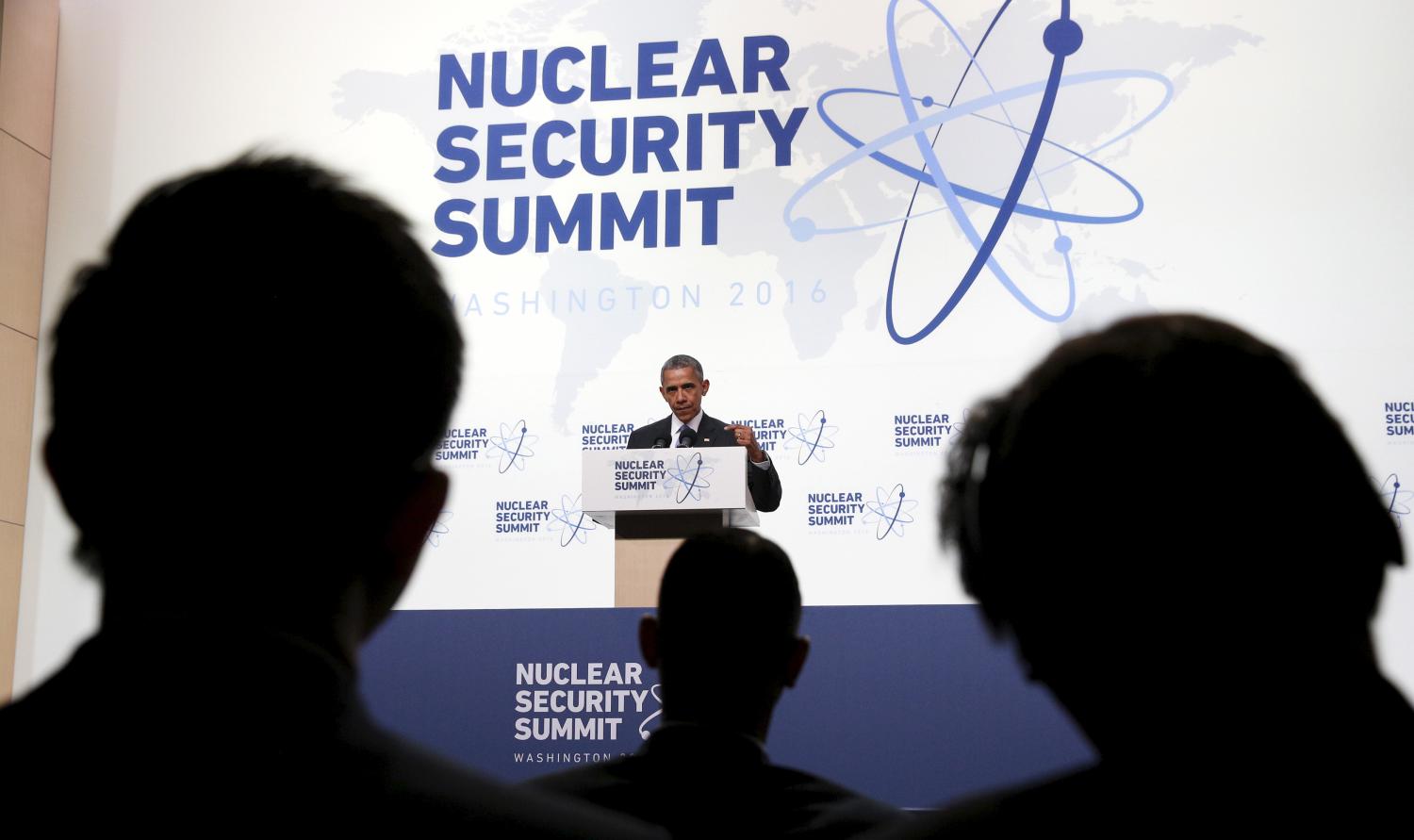
6. Sustaining momentum in nuclear security
A critical challenge for the Trump administration is sustaining the progress that has been made over the past 25 years in nuclear security programs designed to prevent terrorists from gaining access to nuclear weapons and the weapons-usable fissile materials necessary to build them. As chief sponsor of the Nuclear Security Summit (NSS) process that ended in 2016, the United States should seek to ensure that the commitments made during the process are fulfilled, including the commitment to support an enhanced nuclear security role for the IAEA.
The Trump administration’s goal of improving relations with Russia may provide an opportunity to rebuild bilateral cooperation on nuclear security that was terminated in recent years.
The Trump administration’s goal of improving relations with Russia may provide an opportunity to rebuild bilateral cooperation on nuclear security that was terminated in recent years. As co-chairs of the 86-nation Global Initiative to Combat Nuclear Terrorism (GICNT), Moscow and Washington might seek to expand GICNT’s nuclear security mission, including by providing a forum for discussion of nuclear security principles and best practices. The two countries could also revisit some projects that were suspended, including the Plutonium Management and Disposition Agreement to dispose of weapons-grade plutonium, as well as their joint research on the feasibility of converting several Russian research reactors to operate on low-enriched uranium fuel rather than on weapons-grade uranium. And they could complete collaborative work on repatriating Russian-origin highly enriched uranium from third countries such as Belarus and Kazakhstan.
While seeking to restore U.S.-Russian cooperation in the nuclear security area, the Trump administration should also continue and expand bilateral security engagements with other key nuclear powers. Collaboration with China is especially promising, including the establishment of a world-class nuclear security Center of Excellence in Beijing and agreement to work together to convert Chinese-supplied reactors in Ghana and Nigeria to operate on low-enriched fuel. Longstanding bilateral nuclear security cooperation with Pakistan has been productive, and more limited cooperation with India could usefully be expanded.
Given the priority the Trump administration has assigned to preventing terrorism, including WMD terrorism, the decline in recent years in funding for U.S. international nuclear security programs should be reversed.
7. Reinforcing the NPT
Although polarization among NPT parties is not new, the divisions have gotten to the point where they could erode the effectiveness of the non-proliferation regime. The Trump administration should do what it can reduce the polarization and shore up support for the NPT.
The ban treaty
The United States should not participate in negotiations on a treaty to ban nuclear weapons or adhere to it once it is concluded. But rather than mount a futile campaign to block it, Washington should use its influence indirectly to promote an outcome that does not damage the NPT or non-proliferation regime. It should seek to promote a short, normative treaty that expresses the aspirations of its supporters but does not create a new legal regime at variance in any way with the NPT. It is especially important to avoid a situation where a country can withdraw from the NPT, join a ban treaty without IAEA verification obligations, and take advantage of the absence of scrutiny to pursue nuclear weapons. The ban treaty should therefore require its parties also to be members of the NPT in good standing.
NPT Article VI
If additional U.S.-Russian reductions in deployed strategic weapons and systems below New START levels prove too difficult for the time being, Washington and Moscow should pursue other means of demonstrating their commitment to pursue nuclear disarmament under Article VI of the NPT. They could take parallel steps to reduce their inventories of non-deployed nuclear weapons, hasten the rate of warhead dismantlement, or declare additional amounts of fissile material formerly allocated to their nuclear weapons programs as excess to their nuclear weapons needs. They could also engage in bilateral strategic stability talks, which could address their current differences on the components of strategic stability, consider confidence-building measures to reduce current nuclear tensions in Eastern Europe, and lay the groundwork for further nuclear reductions as political conditions improve.
NPT review process
At their 2020 NPT Review Conference, the 50th anniversary of the NPT’s entry into force, the parties should not insist on the all-or-nothing approach to the conference outcome that has contributed to discord and paralysis in the non-proliferation regime. Instead of requiring that the conference final document be approved by consensus, which has resulted in brinksmanship and a failure at half the review conferences to arrive at any outcome, the parties should allow the adoption of a final document that contains proposals that enjoy a consensus as well as those that do not. This simple modification would produce a less contentious and more constructive conference–one more likely to come up with practical ideas for strengthening the treaty.
NPT withdrawal
One of the NPT’s most serious weaknesses is that, if a party exercises its right under Article X to withdraw from the treaty, its safeguards agreement with the IAEA automatically lapses, enabling it without legal restriction to use its previously safeguarded nuclear materials, equipment, and facilities to produce nuclear weapons. To address this loophole, non-nuclear weapon states should be pressed to accept IAEA “facility-specific” safeguards on any enrichment or reprocessing facilities they possess. Such safeguards remain in force even if a state withdraws from the NPT.
NPT parties should also address the case where a party covertly violates the NPT and later claims to legally exercise its right of withdrawal–as North Korea did. The United States and other countries have recommended ways to deal with this problem, such as requiring a withdrawing state to accept intrusive IAEA inspections to determine if it is already violating the Treaty at the time of its withdrawal.
By supporting measures to prevent the abuse of the NPT’s withdrawal provision, the Trump administration could help create another barrier to a state’s decision to opt for nuclear weapons.
Conclusions
While the United States today has less leverage than it once had to influence developments in the field of non-proliferation, U.S. leadership remains indispensable…
While the United States today has less leverage than it once had to influence developments in the field of non-proliferation, U.S. leadership remains indispensable, both in mobilizing broad international support for strengthening the multilateral pillars of the nonproliferation regime and in using the weight of its bilateral relationships to advance non-proliferation goals.
Bilateral engagement with China and Russia will be critical. Relations with China in the period ahead will be competitive in significant respects. But as it pursues its overall agenda with Beijing, the Trump administration should take into account the importance of preserving the potential for cooperation in key non-proliferation areas, including constraining North Korea’s nuclear and missile programs and promoting stronger enforcement of China’s export controls. Similarly, although the United States and Russia are likely to have sharp differences on Ukraine and other issues, they will need to find a way to work together on Iran and nuclear security. The improved bilateral relationship that U.S. and Russian leaders have called for could facilitate such cooperation.
Preventing nuclear proliferation and nuclear terrorism may be more challenging in the years ahead than it has been for the past quarter century. But if the Trump administration gives non-proliferation the top priority it deserves in conducting its foreign and national security policies and exerts the leadership internationally that only the United States can provide, there is a very good likelihood that the success the global nuclear non-proliferation regime has enjoyed can be sustained well into the future.
-
Footnotes
- By the beginning of the 1990s, as a result of its covert reprocessing program, North Korea had produced enough plutonium for one or two nuclear weapons. It is not known precisely when Pyongyang “weaponized” that plutonium. It is assumed here that North Korea could well have fabricated its first nuclear explosive device 25 years ago and that, at a minimum, the DPRK had a nuclear weapons “capability” 25 years ago. The other eight nuclear-armed states are China, France, India, Israel, Pakistan, Russia, the United Kingdom, and the United States.
- Addressing the destabilizing nuclear arms competition between Pakistan and India is certainly a challenge, but not considered here to be a nonproliferation challenge. The United States surely would have preferred that India and Pakistan (and Israel) join the NPT as non-nuclear weapon states. But they never did and therefore never violated the Treaty. While the United States will never accept them as “nuclear weapon states” as defined by the NPT, it long ago recognized that they will not join the NPT and will remain nuclear-armed states for the foreseeable future. Therefore, the South Asia nuclear challenge is not a nonproliferation challenge (i.e., getting the two rivals to give up their nuclear capabilities). Rather, it is to reduce nuclear risks, both the risk of nuclear war and the risk of “loose nukes” and nuclear terrorism. This contrasts with the nonproliferation challenge of North Korea, which joined and violated the NPT and where the U.S. goal is the complete elimination of Pyongyang’s nuclear capability.

